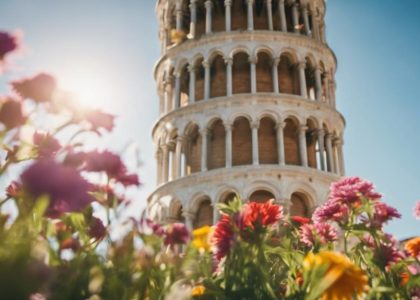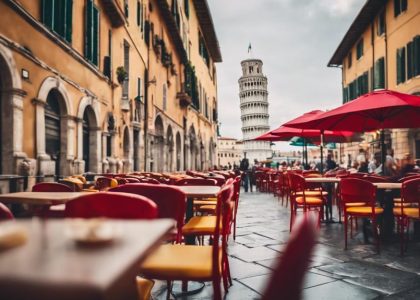Exploring the architectural marvels of Piazza dei Miracoli unveils a rich tapestry of historical significance and artistic brilliance. From the intricate details of each structure to the seamless integration of various architectural styles, this iconic square in Pisa offers a unique glimpse into the past. As we delve into the depths of its history, we unearth fascinating insights that shed light on the innovation and craftsmanship that have stood the test of time. Join this journey through Piazza dei Miracoli's architecture and discover the three best insights that elevate it to a realm of unparalleled beauty and cultural importance.
Historical Evolution of Piazza Dei Miracoli
The historical evolution of Piazza Dei Miracoli traces a captivating narrative of architectural innovation and cultural significance over the centuries. Originally established in the 12th century in Pisa, Italy, the square has undergone various transformations, reflecting the changing tastes and styles of different eras. From its humble beginnings as an empty field to becoming a hub of religious and architectural importance, Piazza Dei Miracoli has witnessed the passage of time and the evolution of architectural trends.
Throughout history, the square has served as a testament to human creativity and ingenuity, showcasing a blend of Romanesque and Gothic architectural styles. The construction of iconic structures such as the Leaning Tower of Pisa, the Pisa Cathedral, and the Baptistery of St. John has not only shaped the skyline of Piazza Dei Miracoli but has also contributed to its status as a UNESCO World Heritage Site. These architectural marvels stand as a reminder of the rich cultural heritage and artistic achievements of past civilizations, inviting visitors to ponder the enduring legacy of human craftsmanship and imagination.
Architectural Wonders of Piazza Dei Miracoli
Having explored the historical evolution of Piazza Dei Miracoli, the focus now shifts towards the architectural wonders that adorn this iconic square in Pisa, Italy. The Piazza is home to three main structures that captivate visitors with their beauty and intricacy. These architectural marvels include:
| Structure | Description | Architectural Style |
|---|---|---|
| Leaning Tower of Pisa | Known worldwide for its tilt, this freestanding bell tower is a masterpiece of medieval architecture. | Romanesque |
| Pisa Cathedral | This cathedral, dedicated to the Assumption of the Virgin Mary, showcases stunning marble façades and intricate bronze doors. | Romanesque |
| Baptistery of Pisa | The largest baptistery in Italy, this circular Romanesque building is renowned for its acoustics and unique pulpit by Nicola Pisano. | Romanesque |
Each of these structures contributes to the enchanting allure of Piazza Dei Miracoli, creating a harmonious architectural ensemble that continues to fascinate and inspire visitors from around the globe.
Significance of Piazza Dei Miracoli Structures

Architecturally, the structures within Piazza Dei Miracoli epitomize a harmonious blend of Romanesque design elements, showcasing unparalleled craftsmanship and historical significance. The Leaning Tower of Pisa, a bell tower of the cathedral, is one of the most iconic structures in the world, known for its distinctive tilt caused by unstable ground. This tilt has become a symbol of resilience and human ingenuity. The Cathedral, or Duomo, dedicated to St. Mary of the Assumption, is a masterpiece of medieval architecture, featuring intricate marble façades and stunning bronze doors. The Baptistery, dedicated to St. John the Baptist, is the largest in Italy and stands as a testament to the city's rich religious history. Collectively, these structures represent not only architectural marvels but also serve as a reminder of Pisa's cultural heritage and the enduring spirit of human creativity. The Piazza Dei Miracoli stands as a timeless testament to the power of human endeavor and the beauty that can arise from a blend of artistic vision and architectural prowess.





